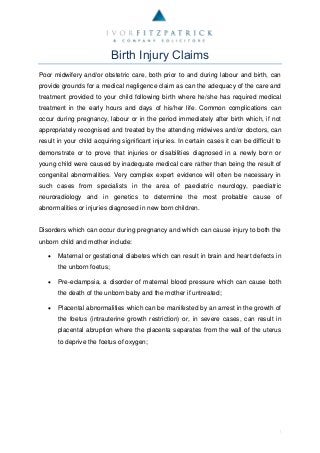Signaler
Partager
Télécharger pour lire hors ligne

Recommandé
Recommandé
Contenu connexe
En vedette
En vedette (20)
Product Design Trends in 2024 | Teenage Engineerings

Product Design Trends in 2024 | Teenage Engineerings
How Race, Age and Gender Shape Attitudes Towards Mental Health

How Race, Age and Gender Shape Attitudes Towards Mental Health
AI Trends in Creative Operations 2024 by Artwork Flow.pdf

AI Trends in Creative Operations 2024 by Artwork Flow.pdf
Content Methodology: A Best Practices Report (Webinar)

Content Methodology: A Best Practices Report (Webinar)
How to Prepare For a Successful Job Search for 2024

How to Prepare For a Successful Job Search for 2024
Social Media Marketing Trends 2024 // The Global Indie Insights

Social Media Marketing Trends 2024 // The Global Indie Insights
Trends In Paid Search: Navigating The Digital Landscape In 2024

Trends In Paid Search: Navigating The Digital Landscape In 2024
5 Public speaking tips from TED - Visualized summary

5 Public speaking tips from TED - Visualized summary
Google's Just Not That Into You: Understanding Core Updates & Search Intent

Google's Just Not That Into You: Understanding Core Updates & Search Intent
The six step guide to practical project management

The six step guide to practical project management
Beginners Guide to TikTok for Search - Rachel Pearson - We are Tilt __ Bright...

Beginners Guide to TikTok for Search - Rachel Pearson - We are Tilt __ Bright...
Birth Injury Claims
- 1. 1 Birth Injury Claims Poor midwifery and/or obstetric care, both prior to and during labour and birth, can provide grounds for a medical negligence claim as can the adequacy of the care and treatment provided to your child following birth where he/she has required medical treatment in the early hours and days of his/her life. Common complications can occur during pregnancy, labour or in the period immediately after birth which, if not appropriately recognised and treated by the attending midwives and/or doctors, can result in your child acquiring significant injuries. In certain cases it can be difficult to demonstrate or to prove that injuries or disabilities diagnosed in a newly born or young child were caused by inadequate medical care rather than being the result of congenital abnormalities. Very complex expert evidence will often be necessary in such cases from specialists in the area of paediatric neurology, paediatric neuroradiology and in genetics to determine the most probable cause of abnormalities or injuries diagnosed in new born children. Disorders which can occur during pregnancy and which can cause injury to both the unborn child and mother include: Maternal or gestational diabetes which can result in brain and heart defects in the unborn foetus; Pre-eclampsia, a disorder of maternal blood pressure which can cause both the death of the unborn baby and the mother if untreated; Placental abnormalities which can be manifested by an arrest in the growth of the foetus (intrauterine growth restriction) or, in severe cases, can result in placental abruption where the placenta separates from the wall of the uterus to deprive the foetus of oxygen;
- 2. 2 During labour common complications which can arise that will usually require appropriate midwifery and/or obstetric intervention in order to prevent injuries to the unborn foetus include: Excessive or inappropriate use of oxytocin/syntocinon, a drug administered to a mother to induce or to augment labour but which can result in overstimulation of the uterus and thereby can adversely affect the oxygen supply to the foetus; Failure to adequately monitor foetal heart rate or failing to identify and act upon abnormalities in the foetal heart rate; Inappropriately delaying the performance of an instrumental delivery, whether by forceps or a vacuum extraction (ventouse); Inappropriately delaying performance of an emergency caesarean section; Using inappropriate techniques during an assisted or instrumental delivery. Following delivery, it is essential to ensure that the neonate achieves adequate oxygenation and should any restrictions in oxygen delivery be identified, the airways should be appropriately suctioned (to remove inappropriate secretions) and resuscitation/ventilation undertaken to provide adequate oxygen delivery. The medical negligence team at Ivor Fitzpatrick & Company have successfully brought to trial and/or have settled many birth injury claims through establishing that inadequate obstetric and/or midwifery care during the antenatal period and/or during labour and the delivery has caused serious injuries such as: Cerebral Palsy; Other brain injuries; Skull fractures, and; Nerve injury to a shoulder (Erbs Palsy).
- 3. 3 We understand that the consequences of a traumatic labour and birth which results in an injured child are emotionally devastating and we will endeavour to do all that we possibly can to ensure that the necessary investigations are carried out as sensitively and as quickly as is reasonably practicable whilst ensuring that the full information and evidence of the relevant events surrounding the birth are thoroughly examined. In the event there is reasonable evidence of medical negligence which has caused any or all of the injuries which may affect your child, we will vigorously pursue a claim for proper compensation so that your child’s needs are adequately met.